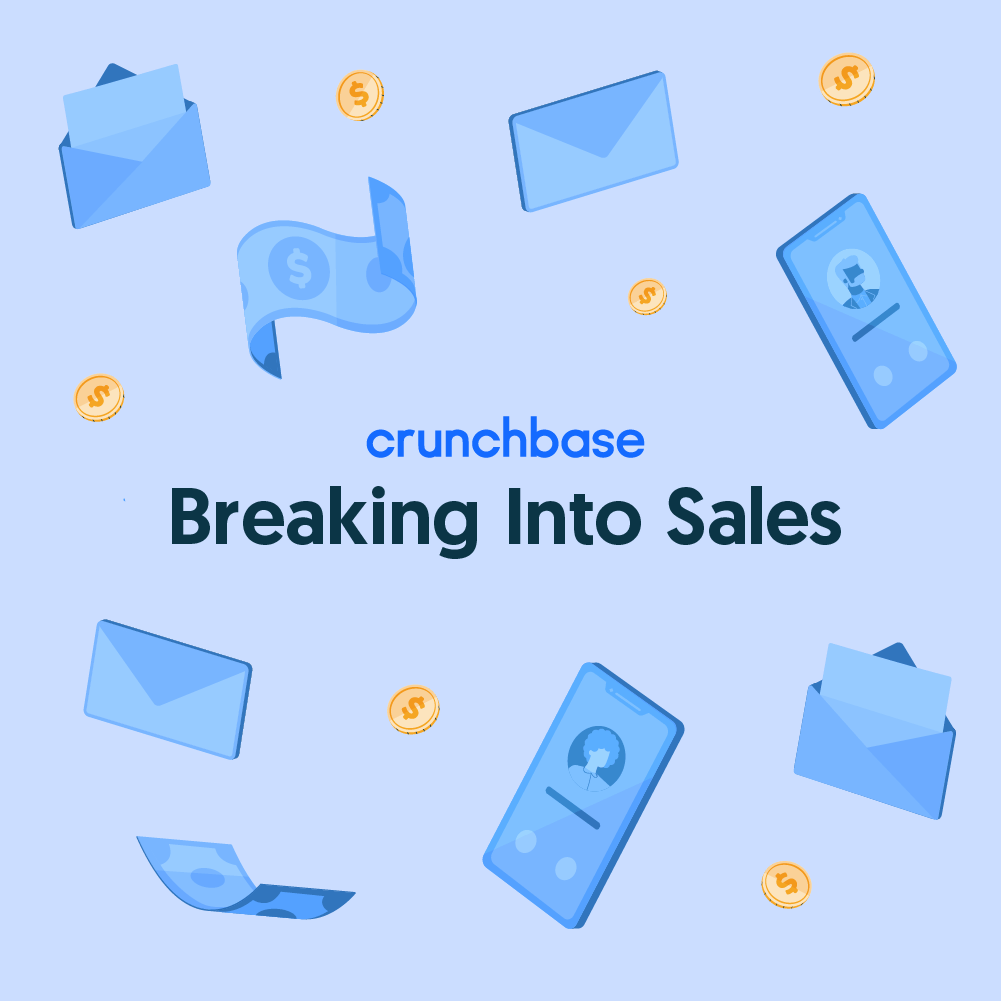This article is part of the Crunchbase Community Contributor Series. The author is an expert in their field and a Crunchbase user. We are honored to feature and promote their contribution on the Crunchbase blog.
Please note that the author is not employed by Crunchbase and the opinions expressed in this article do not necessarily reflect official views or opinions of Crunchbase, Inc.
There’s a reason why LinkedIn’s ad business—worth more than $4 billion annually—is growing rapidly. B2B marketers are catching up with the B2C space in using social media to drive revenue. They more and more understand that listening to the customer voice across digital channels, including social media and reviews sites, should be a key part of their success.
Social selling, which is a way to engage and get to know prospects through social media, has become an area in which B2B brands must be competitive. The best salespeople leverage social media to start conversations, learn about their clients, and ultimately build long-term relationships with their clients or prospects. For instance, studies have shown that close to 80 percent of salespeople using social media for their jobs are outselling those who are not. Further, 75 percent of B2B buyers and 84 percent of C-level executives are influenced by social media when making purchasing decisions.
B2B marketers and salespeople are not only on LinkedIn but also Meta (Facebook), Twitter, Quora, Reddit and product review sites like G2. These digital platforms, while different in nature, are about community, and represent opportunities for sales pros to develop reputations as trusted consultants. Sales pros should be guided by principles and best practices as they digitally interact with customers and prospects, honing their techniques during a pandemic when in-person sales opportunities have diminished. With that in mind, here are four tips for advanced social selling.
Search less. Close more.
Grow your revenue with all-in-one prospecting solutions powered by the leader in private-company data.
Social selling tip No. 1: It’s not just a profile—it’s a story
Too often with social media profiles, professionals upload their headshot, quickly type their job title into their bio, enter in their alma mater(s), and call it good. To put it another way, they make a quick-and-dirty, digital version of their resume—a big missed opportunity.
Sales pros should use these social pages to tell their sales story as much as explain their careers. Your LinkedIn, Twitter or Quora profile is crucial because it will be the landing page for prospects and customers who want to learn more after engaging with your content.
Your profile should help you earn the trust you need as a seller. It tells the story of how you approach making your clients successful and what you know and get excited about in the industry you serve. So, to create a compelling profile, make your headline speak to who you are as a knowledgeable consultant as much as who you work for. Demonstrate to customers and prospects what your professional values are and why they should trust you, using the “show, don’t tell” method of effective written communications. Be real. Use simple, but illuminating, language and avoid buzzwords. You can still plug the products or services you sell, just detail their distinctive value props and describe the problems they solve without overstating their benefits.
Indeed, it’s important to be concise rather than salesy. For instance, by default, LinkedIn only displays the first three lines—roughly 300 characters—of a profile summary before viewers have to click to see more. An old adage comes to mind: “Be brief. Be brilliant. Be gone.” And the best way to pack a punch is showing the target audience that you understand the problems they need to solve.
Social selling tip No. 2: Great content is a stature play
For salespeople, social media needs to entail a higher level of content sophistication compared to someone who simply wants to moonlight as a thought leader or rabble-rouse with the public. On LinkedIn, you need a plan by identifying your core audience, which content they will be interested in, which information can help them do their jobs better, and however else you can be of service. These elements will inform not only what content you post but what kind of stature you aim to achieve on social media.
To find relevant, great content, your sales team should have a dedicated “news wrangler,” a staffer who gathers each day’s biggest developments and best thought leadership so each salesperson can skim the items and post relevant articles. If such a wrangler is not on staff, put time on your weekly schedule to do a news scan, give yourself a few minutes to discern if an article or video is relevant enough to bring value to your target audience, and write thoughtful copy. Then, put time on your schedule a few hours later so you can respond to comments and engage with readers about the topic—you want to take advantage of those back-and-forths.
Being a trusted source of great content will bolster your credibility with buyers. This trust will allow you to complement your “service journalism” style of social selling with updates about your company, its products and other helpful information without coming across as sales-y. You are not a part of their social community just to make a quick buck—you are there because you are a B2B pro just like they are.
Further, a dedication to great content can drive your profile’s signal via social platforms’ algorithms, and your posts will be served more often at relevant times: All of which will drive your stature in front of customers and prospects.
Social selling tip No. 3: Focus on people, not pipeline
In social selling, it’s critical your outreach doesn’t read like a template where you just plug in their first name, role and employer. We’ve all seen it before: “Hi [insert name], since you are the [insert role] and are focused on [insert industry]…”
While that might help you feel like you are building your sales pipeline, you should be more focused on relationships. Identify your B2B buyer’s pain points and, when possible, offer ideas. Engage with them directly and be on point. For instance, in 2022, martech software sellers know that privacy policies are a pain point for their buyer community because data is drying up. On LinkedIn, Twitter or Quora, it’s an opportunity to help buyers by offering relevant news, how-to information and, when the time is right, product information.
To dig deeper, salespeople should read reviews for products their company and its competitors have gone to market with. They should also ask their colleagues in the customer success department why clients bought a product and what problems they are hearing about from their customers. This intelligence will help you deliver social content that’s worth the individual buyer’s time and engagement. It’s all about focusing on people instead of the pipeline.
Social selling tip No. 4: Listen to customer voice
Social platforms are great for listening to your customers’ voice and then applying it to social selling. Customer voice is all about the small but important ways of “checking in” to get feedback from prospects and customers about their experiences and expectations for your products or services.
Like your daily news scan, give yourself 15 minutes a day to read your LinkedIn feed for customer voice opportunities. Takes notes about individual customers and prospects as well as bigger themes people are posting about. And again, read reviews for various relevant products in the market to understand the user experience. Then, you can employ such intelligence to create meaningful engagement with the target audience.
In closing, what each of these four tips have in common is a customer-centric mindset. Your profile needs to be a smart landing page to help the customer. Your content needs to be useful to help the customer. Focusing on people instead of pipeline and listening to the customer voice will help the customer. In other words, social selling is all about being of service and qualifying yourself as a trusted consultant before you attract qualified leads.
With nearly 20 years of experience, G2 Chief Revenue Officer Mike Weir has been involved in building, growing, and scaling some of the world’s most reputable brands. Weir joined G2 from LinkedIn, where he led a world-class sales and support team that consulted with technology companies about using the social platform to build their brand and generate revenue.






